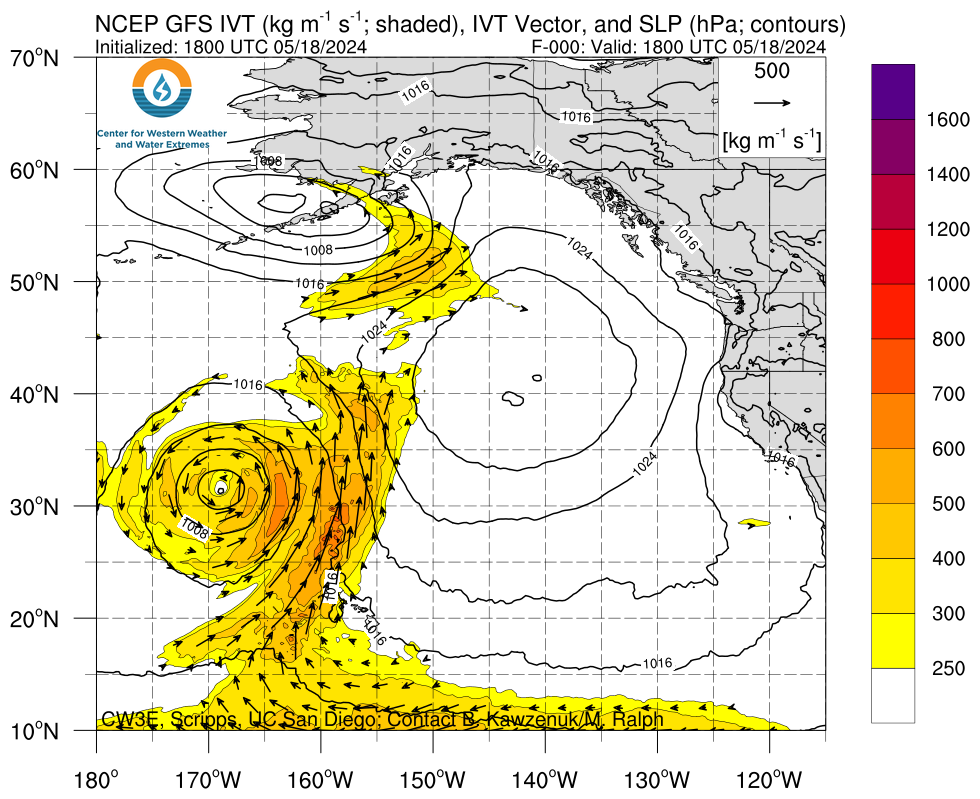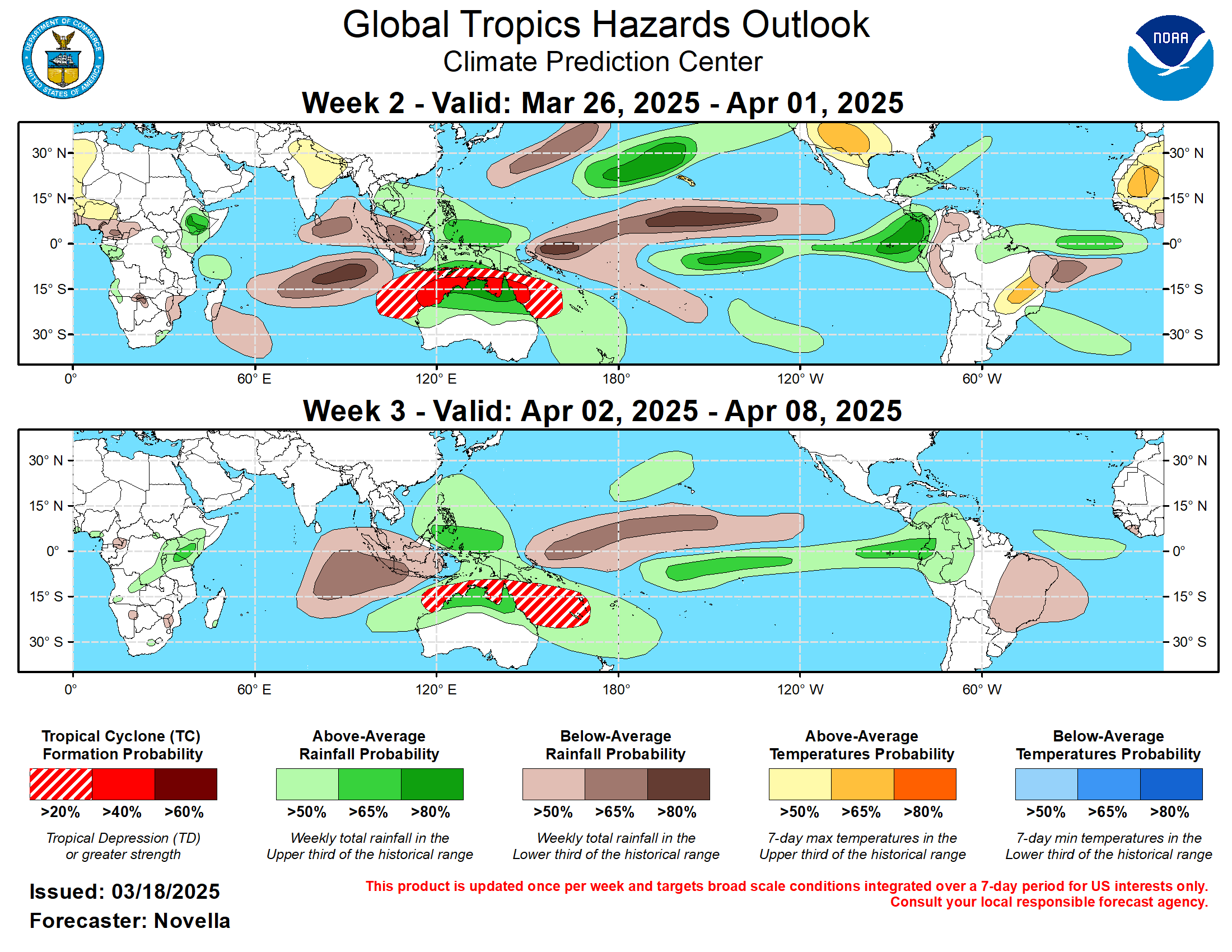This article focuses on what we are paying attention to in the next 48 to 72 hours. The article also includes weather maps for longer-term U.S. outlooks and a six-day World weather outlook which can be very useful for travelers.
First the NWS Short Range Forecast. The afternoon NWS text update can be found here after about 4 p.m. New York time but it is unlikely to have changed very much from the morning update. The images in this article automatically update.
Short Range Forecast Discussion
NWS Weather Prediction Center College Park MD
Sun May 26 2024
Valid 12Z Sun May 26 2024 – 12Z Tue May 28 2024…Severe weather and heavy rain chances shift into the Mid-Mississippi,
Ohio and Tennessee valleys today before progressing into the Mid-Atlantic,
Southeast, and Gulf Coast on Memorial Day……Dangerous and potentially record-breaking heat continues across parts
of Texas, the western Gulf Coast, and southern Florida……Active weather returns to the southern Plains on Tuesday with
additional chances for severe weather and flash flooding…An organizing storm system over the central U.S. is responsible for
numerous thunderstorms stretching from Kansas/Missouri to the Edwards
Plateau of Texas. Boundaries aiding this convection include a dryline
extending southward through the southern Plains and a slowly lifting warm
front stretching from the central Plains through the Ohio Valley. Current
storms are expected to grow upscale and merge into a larger complex of
thunderstorms by morning while swinging through parts of Missouri,
Illinois, western Kentucky, and neighboring states. Damaging wind gusts,
large hail, and tornadoes are possible. Additionally, heavy rain may lead
to scattered instances of flash flooding with this initial burst of
thunderstorms. By the afternoon hours another round of showers and
thunderstorms are expected to develop along a cold front and impact
similar regions, with the severe threat shifting further east across the
Ohio Valley overnight. More chances for all modes of severe weather are
possible, with repeating storms potentially increasing the flash flooding
threat throughout parts of Kentucky and Tennessee. Area of heavy rain may
also lead to flash flooding concerns near the low pressure center as it
progresses toward southern Wisconsin tonight.As the center of the storm system enters the Great Lakes on Monday and the
attached cold front extends from the Ohio Valley to the southern Plains,
severe weather and heavy rain chances will focus along the eastern U.S.
and Gulf Coast States. More specifically, the greatest chances for intense
rainfall rates leading to flash flooding exists across eastern
Pennsylvania and neighboring section of southeast New York and northwest
New Jersey, where a Slight Risk (level 2/4) of Excessive Rainfall is in
effect on Memorial Day. Severe thunderstorms are most likely across the
Mid-Atlantic as well as an area stretching from the Lower Mississippi
Valley to the Southeast. Damaging wind gusts and hail are the primary
potential hazards. Residents and visitors planning to enjoy outdoor
holiday barbecues and parties should remain weather aware and have
multiple ways to receive warnings.Oppressive and potentially dangerous heat is set to continue for at least
the next few days throughout parts of southern Texas, the lower
Mississippi Valley, and southern Florida. Highs are expected to reach well
into the 90s for the southern Plains and western Gulf Coast, with triple
digits across southern portions of Texas. Elevated humidity levels will
make it feel even hotter, with heat indices approaching 115 degrees. Daily
record highs are also possible in this region and extending to southern
Florida as well through Tuesday. Residents and visitors are urged to
follow proper heat safety by staying hydrated, taking breaks inside
buildings with air conditioning, as well as checking on the vulnerable
population. Above average and summer-like temperatures will also extend
towards the eastern U.S. today as well before slightly cooler weather
arrives behind a cold front on Tuesday. Conversely, a warm up is on the
way throughout the West as upper ridging builds and spreads highs into the
70s and 80s for the northern Great Basin and northern High Plains.Meanwhile, the next round of active weather is set to impact the southern
Plains on Tuesday as a lingering frontal boundary and favorable upper jet
dynamics spark developing thunderstorms from western Oklahoma/Kansas to
Texas and the lower Mississippi Valley. Scattered instances of flash
flooding are possible, which is highlighted by a Slight Risk of Excessive
Rainfall throughout central and north-central Texas, as well as southern
Oklahoma. Some storms in the southern High Plains may also become strong
enough to produce damaging wind gusts and large hail.
To get your local forecast plus active alerts and warnings click HERE and enter your city, state or zip code.
Learn about wave patterns HERE.
Then, looking at the world and of course, the U.S. shows here also. Today we are looking at precipitation.
Please click on “Read More” below to access the full Daily Report issued today.
| Notices: What would you like to learn about? Please provide that to me via the comment section at the end of the article. |
Now more detail on the 48-Hour Forecast (It is a 48 to 72 Hour Forecast actually)
Daily weather maps. The Day 1 map updates twice a day and the Day 2 and 3 maps update only once a day. These maps update automatically. But if that does not happen, you can get updates by clicking HERE
TODAY (or late in the day the evening/overnight map will appear) (Key to surface fronts shown on maps and you will then also be able to insert a city name or zip code and get a local NWS forecast).
TOMORROW
NEXT DAY
We have a new animation of the forecast which shows how things may play out over the next 60 hours. To update click ANIMATION. Doing so will get you to the dashboard. You can then step through the animation or hit LOOP on the upper right of the display. You will have to hit the back arrow ← at the top left on your computer to get back into this article. It is a little more trouble than before but I think NOAA scrapped the animation routine I was using so we have to keep up with “progress”.
The NWS Climate Prediction Center’s: Watches, Warnings, and Advisories plus other information can be found HERE. That takes you to the NWC Severe Weather Site. From there you can select among many categories of information. Remember to hit the back arrow ← at the top left of your screen to return to this article.
ATMOSPHERIC RIVERS
This tells us what is approaching the West Coast. Click HERE to update If I have not gotten around to doing the update. Here is some useful information about Atmospheric Rivers.
Below is the current five-day cumulative forecast of precipitation (Updates can be found HERE)
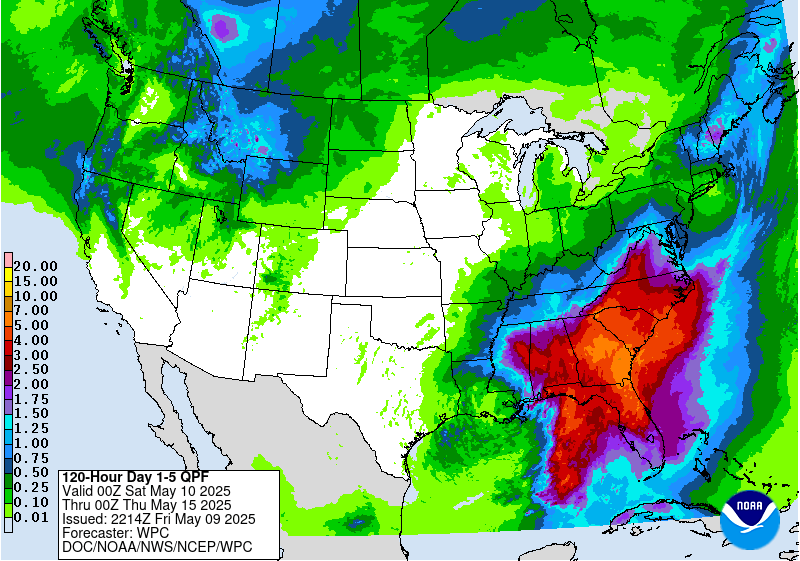
Ski SnowReports will Resume in the Fall.
Now we look at Intermediate-Term “Outlook” maps for three time periods. Days 6 – 10, Days 8 – 14, and Weeks 3 and 4. An outlook differs from a forecast based on how NOAA uses these terms in that an “outlook” presents information as deviation from normal and the likelihood of these deviations.
Below are the links to obtain updates and additional information. They are particularly useful if you happen to be reading this article significantly later than when it was published. I always try to provide readers with the source of the information in my articles. These links may also be useful for those viewing this article on a cell phone or other small screen.
| Days 6 – 10 (shown in Row 1) | Days 8 – 14 (Shown in Row 2) | Weeks 3 and 4 (Shown in Row 3 but updates only on Fridays) |
| https://www.cpc.ncep.noaa. gov/products/predictions/610day/ | https://www.cpc.ncep .noaa.gov/products/predictions/814day/ | https://www.cpc.ncep.noaa.gov/products/predictions/WK34/ |
Showing the actual maps. They should now update automatically. The Week 3 – 4 Outlook only updates on Fridays. So below is what I call the Intermediate-term outlook. On Fridays, it extends out 28 Days. That declines day by day so on Thursday it only looks out 22 days until the next day when the Week 3 – 4 Outlook is updated and this extends the outlook by one additional week.
| 6–
10
|
|
|
| 8–
14 |
|
|
| 3–
4 |
|
|
HAZARDS OUTLOOKS
Click here for the latest complete Day 3 -7 Hazards forecast which updates only on weekdays. Once a week probably Monday or Tuesday I will update the images. I provided the link for readers to get daily updates on weekdays. Use your own judgment to decide if you need to update these images. I update almost all the images Friday Night for the weekend edition of this Weather Report. So normally readers do not need to update these images but if the weather is changing quickly you may want to.
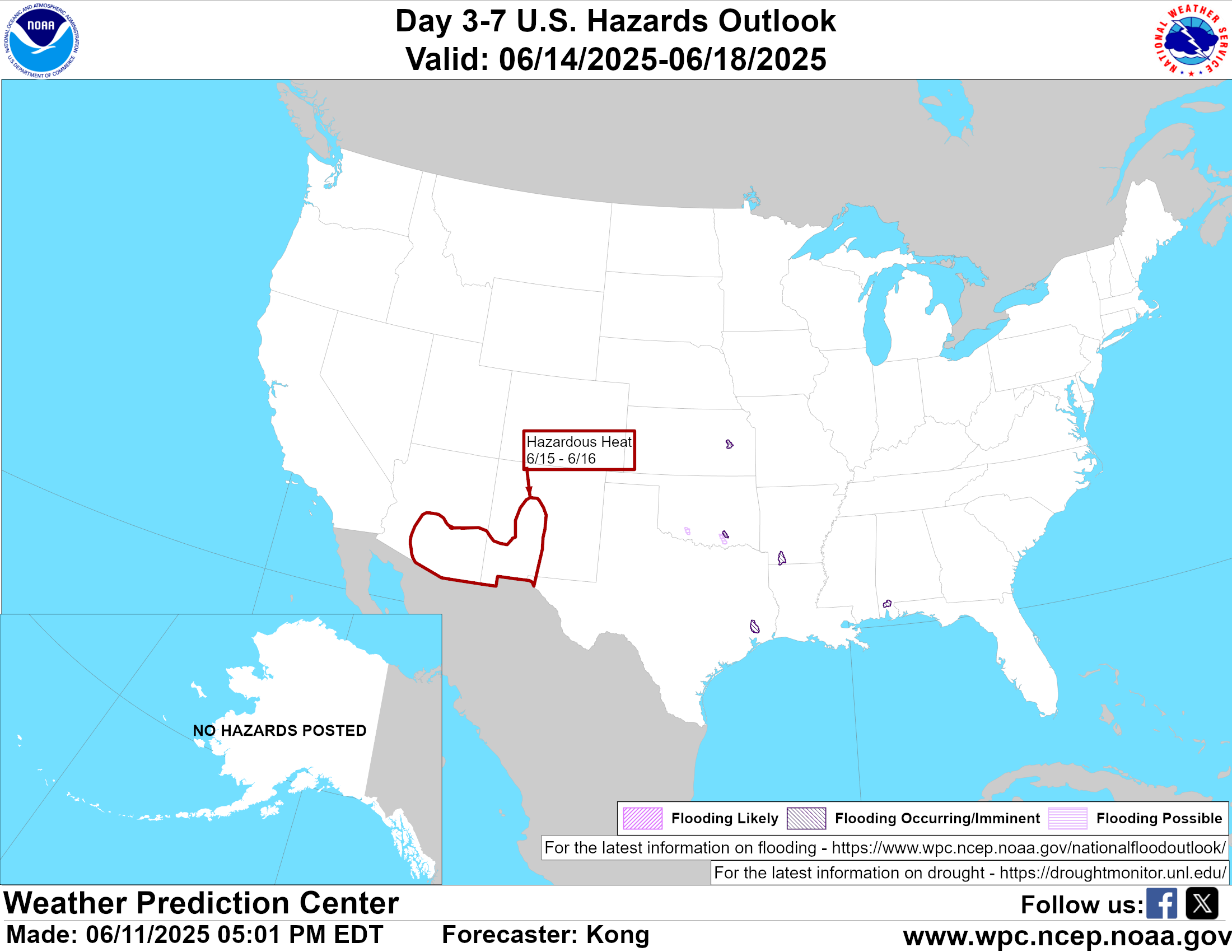
Temperature month to date can be found at https://hprcc.unl.edu/products/maps/acis/MonthTDeptUS.png
Precipitation month to date can be found at https://hprcc.unl.edu/products/maps/acis /MonthPNormUS.png
World Forecast [that website is has been intermittent so be patient]
Below are the Day 1 -3 and 4-6 forecasts for temperature and precipitation. Updates and much additional information can be obtained HERE
World Temperature Anomalies

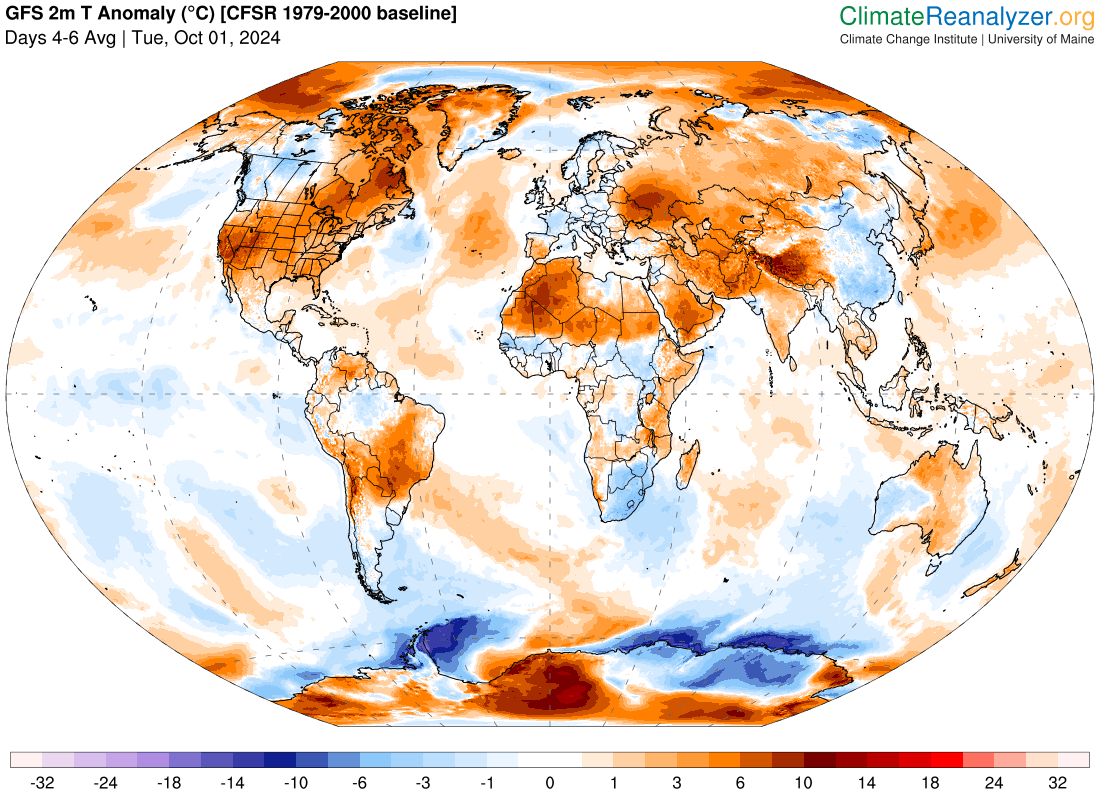
World Accumulated Precipitation
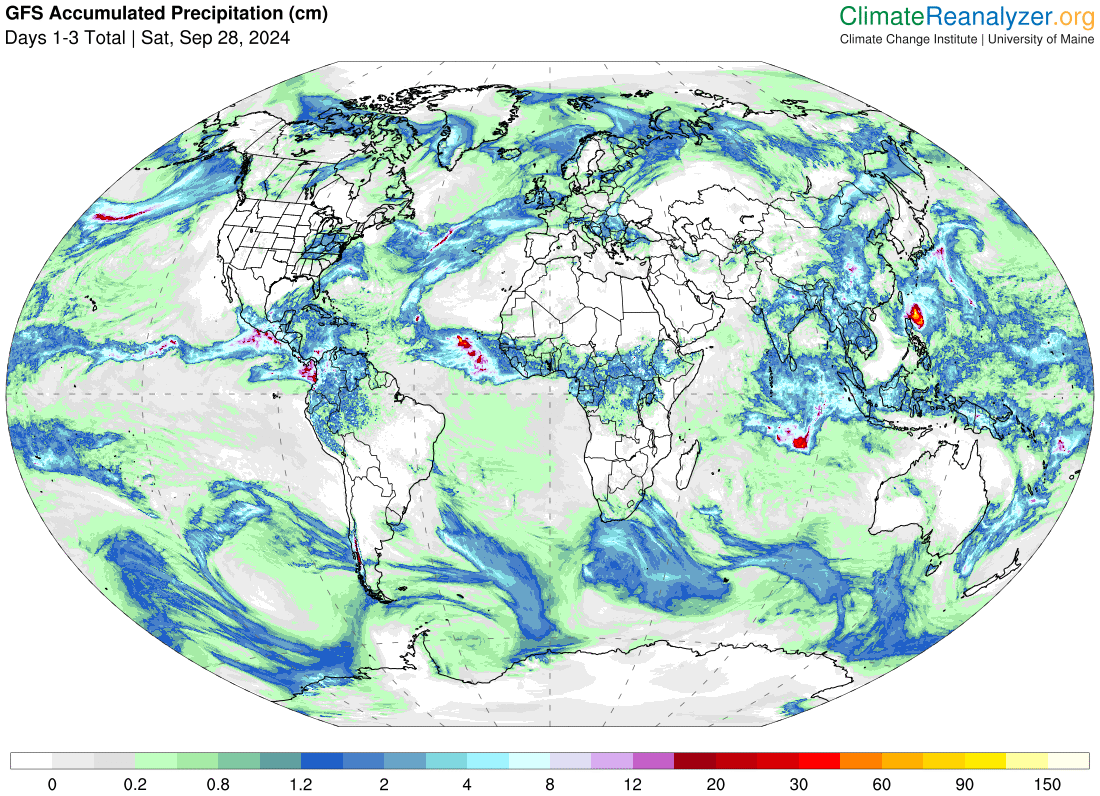

This information is provided by the University of Maine. They draw upon many different sources. There is a lot of information available at the link provided. I have just provided two useful forecasts. There are probably over a hundred different forecasts available from this source.
Worldwide Tropical Forecast (This is a NOAA Product)
This graphic updates on Tuesdays) If it has not been updated, you can get the update by clicking here Readers will only have to do that if they are reading this article much later than the date of it being published.
Information on Tropical Storms can be found HERE. Western Pacific information can be found HERE. Note that unless there is an out-of-season storm the below images will not update until the National Hurricane Center starts their seasonal update of these maps on June 1. I include them simply because there can be an out-of-season event in which case it should show up in these maps.


–
| I hope you found this article interesting and useful. |
–

